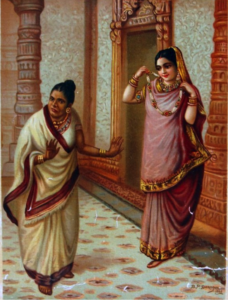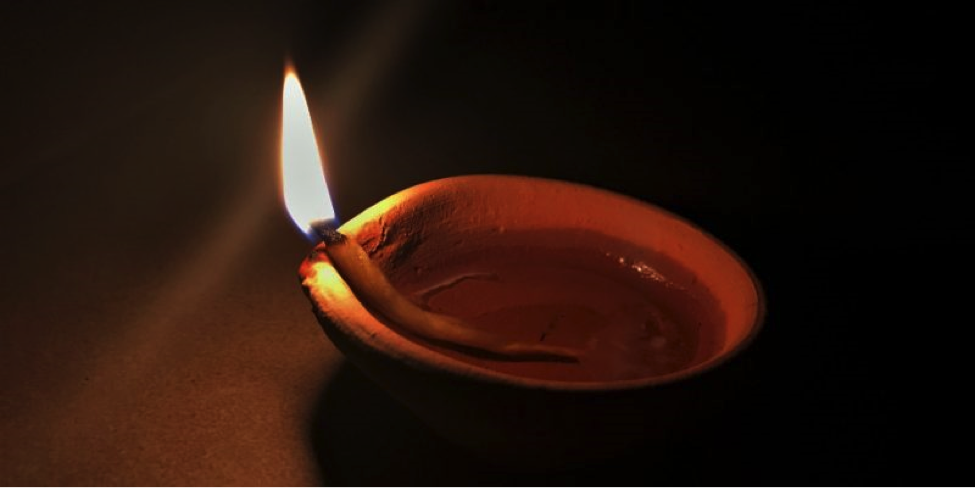“What are the scenes you want to enact from the Ramayan?” We asked the members in the women’s ward of the Haryana Jail where we have started conducting monthly Psychodrama sessions. The Superintendent of the jail is a wise and humane man, and encourages them to be constructively busy, and after due diligence, welcomed our proposal of holding psychodrama sessions to help women in their journey of self-reflection, self-understanding, self- acceptance and interpersonal co-existence.
This session fell just before Diwali. It was an occasion of sadness for them…to be away from family, children, the world, from celebrations.
When we reached there, we discovered, the day prior, they had staged a play where Manthara the scheming maid of Queen Kaikeyi poisons her mistress’ mind against Prince Ram.
They wanted to stage the play for us too, and we of course agreed.

Going with the flow
We immediately dropped the ‘prepared ideas’ we had come with for conducting the session. We watched the sincere performance, the self-scripted dialogues spoken out clearly (but without much expression), and costumes scrimped out imaginatively with scarce resources.
After the play, improvising and going spontaneously with the flow, we divided the members into 4 groups, and the team-building task was to stage different scenes from the same story- the Ramayan. Until now, there had been only 5 actors in the practiced play- but now even the audience was given a chance of performing on stage!
We encouraged them to create their own versions or even provide a different ending to their scenes. After each play, we explored with the group- how was your experience while doing the play? How did it relate to your personal lives? It was so interesting to see how the chosen theme connected with the members who had selected it.
Connecting the stories with their personal lives
Group 1: showed a Hanuman who was more environmentally conscious, who would not burn Lanka on his way back from visiting Sita; nor uproot trees to get Sanjeevani to save Laxman (but would still accomplish his task). These older women, above 50 years, chose themes of service…in terms of being conscious of the burden on mother earth. They were also Hanuman devotees and spontaneously burst into a bhajan in His praise.
Group 2: showed the scene of the reunion of Ram with Sita and her sons Love-Kush in the forest. While he is pleased to see them, Sita gives him an earful for his absence. Comprising of younger women, in their 20s and 30s; their exploration led to the feeling of the sorrow of not being with their families and children, and it was expressed through the topic of Ram’s reunification with the family. We explored the opportunity the play gave to them to express their grief, and how feeling it would be more releasing than to bury it within.
Group 3: showed Kaikeyi who refused to listen to Manthara, as a result, Ram was crowned King. Ram and his family thereafter went to the forest- but for a picnic! They had a grand time eating mangoes and berries from the trees. All from a rural background, these group members had childhood memories of going to nearby forests and climbing trees. They liked reliving those memories.
Group 4: showed Shabari who had waited for Ram so many years in the forest to welcome him with the sweetest berries which she had personally selected for him. Again older women, who were devotees of Lord Ram, they expressed through a song and dance.
Groups had formed by self-selection, but it clearly showed sociometric choices, ie people who have common elements gravitate together. Sociometry can be an interesting way to look at group dynamics.
These expressions gave these women a chance to explore who they were in a safe way; it is early stages yet, and we are not going into personal histories. The format allows them to show up in a space of no judgments, their representation in whatever form is welcome, and it allows us to build a container for further explorations. As well as providing an opportunity to think beyond cultural conserves, outside the box. We want to eventually move to self-regulation of one’s behavior, for which the first step is to access both thinking and emotions, rather than swinging between extremes of being disconnected with emotions and on the other hand getting lost in the storm and outburst of emotions.
Everyone dances in the end to the devotional folk songs in the end. My co-facilitator joins in the dance (he is the only male in the room) and I admire his ease and flow. The goodbye in the end is full of warmth and hugs; and for a few minutes we forget that it is a different world, with restrictions and boundaries; which came alive when one inmate askes me: ‘Can I have your phone number, to contact you after I am released?’. I look into her eyes, and say quietly, ‘no’. I reflect on the holding both polarities together- of laughter and despair; of hope and loss; of blame and acceptance; of love and drawing boundaries; light and dark. Isn’t that Diwali, as part of life is about?
……………………………….
This experience of working with prisoners to bring a change in their emotional and mental lives is possible because of the open-minded and humanistic approach of both the Superintendent and the Haryana Jail authorities we have met. We use the same approach in our work with organizations to clarify values and review behaviors, practicing new spontaneous and creative attitudes to create a Flourishing Organization, using Psychodrama and Sociodrama.

